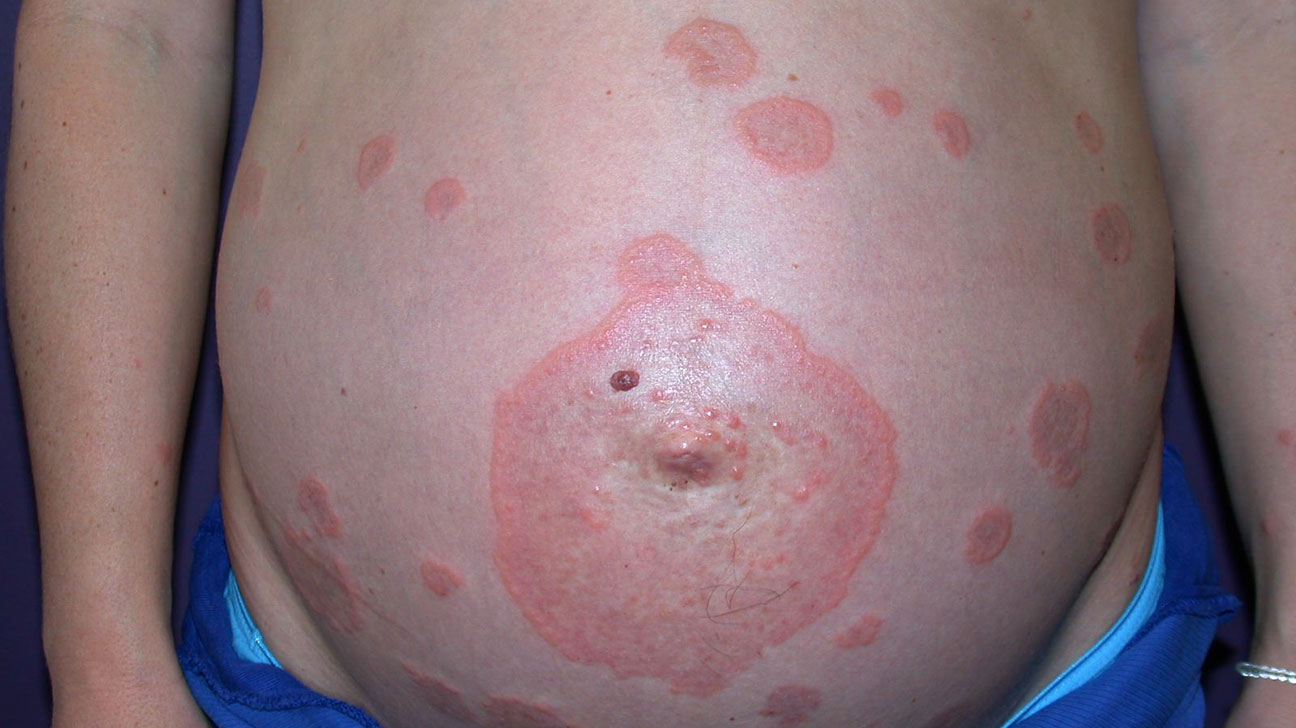
Gestational Pemphigoid is a rare autoimmune blistering disorder that occurs during pregnancy. Affecting approximately 1 in 50,000 pregnancies, it often starts in the second or third trimester. This condition causes intense itching and blistering, primarily around the abdomen, but can spread to other areas. The exact cause remains unknown, but it involves the immune system mistakenly attacking the skin. Symptoms can be distressing but usually resolve after childbirth. However, there is a risk of recurrence in future pregnancies. Treatment typically includes corticosteroids to manage inflammation and itching. Understanding this condition is crucial for expecting mothers and healthcare providers.
Key Takeaways:
- Gestational Pemphigoid is a rare itchy rash that occurs during pregnancy, affecting 1 in 50,000 pregnancies. It can start in the second trimester and may be related to the immune system's reaction to pregnancy.
- Symptoms include itchy red bumps and blisters, and it can be managed with topical or oral steroids, antihistamines, and moisturizers. Regular monitoring by a healthcare provider is crucial for both mother and baby's health.
What is Gestational Pemphigoid?
Gestational Pemphigoid is a rare autoimmune skin disorder that occurs during pregnancy. It causes itchy, blistering rashes, usually starting around the belly button. Understanding this condition can help expecting mothers manage symptoms and seek appropriate care.
-
Autoimmune Disorder: The body’s immune system mistakenly attacks its own skin cells, causing blisters and rashes.
-
Rare Condition: Affects approximately 1 in 50,000 pregnancies, making it quite uncommon.
-
Starts in Second Trimester: Typically begins in the second or third trimester, but can start at any time during pregnancy.
-
Itchy Rash: The primary symptom is an intensely itchy rash, often starting around the belly button.
-
Blisters Form: The rash can develop into large, fluid-filled blisters that can be very uncomfortable.
Causes and Risk Factors
Understanding the causes and risk factors can help in early detection and management of Gestational Pemphigoid.
-
Unknown Cause: The exact cause is unknown, but it’s believed to be related to the immune system’s reaction to pregnancy.
-
Placental Proteins: The immune system may react to proteins in the placenta, mistaking them for harmful invaders.
-
Genetic Factors: There may be a genetic predisposition, as it sometimes runs in families.
-
Previous Pregnancies: Women who have had Gestational Pemphigoid in a previous pregnancy are at higher risk of developing it again.
-
Autoimmune History: A history of other autoimmune diseases can increase the risk.
Symptoms and Diagnosis
Recognizing symptoms early can lead to a quicker diagnosis and better management of the condition.
-
Initial Rash: Starts as red, itchy bumps around the belly button, spreading to other areas.
-
Blistering: These bumps can turn into large blisters filled with fluid.
-
Spreads to Limbs: The rash often spreads to the arms, legs, and sometimes the face.
-
Skin Biopsy: Diagnosis is confirmed through a skin biopsy, where a small sample of skin is examined under a microscope.
-
Blood Tests: Blood tests can detect specific antibodies associated with the condition.
Treatment and Management
Managing Gestational Pemphigoid involves reducing symptoms and preventing complications.
-
Topical Steroids: Mild cases can be treated with topical steroids to reduce inflammation and itching.
-
Oral Steroids: Severe cases may require oral steroids to control symptoms.
-
Antihistamines: These can help relieve itching and improve comfort.
-
Moisturizers: Keeping the skin moisturized can help reduce irritation and prevent further damage.
-
Monitoring: Regular monitoring by a healthcare provider is essential to manage the condition and ensure the health of both mother and baby.
Final Thoughts on Gestational Pemphigoid
Gestational pemphigoid, a rare autoimmune disorder, affects pregnant women, causing blistering rashes. Understanding its symptoms, causes, and treatments is crucial for expecting mothers. Early diagnosis helps manage discomfort and prevent complications. Treatments often include corticosteroids and antihistamines, providing relief and ensuring a safer pregnancy.
Awareness of this condition empowers women to seek timely medical advice, improving outcomes for both mother and baby. If you or someone you know experiences unusual skin changes during pregnancy, consult a healthcare professional. Knowledge is power, and being informed about gestational pemphigoid can make a significant difference.
Stay vigilant, prioritize health, and don't hesitate to reach out for support. Pregnancy should be a joyful journey, and managing conditions like gestational pemphigoid effectively ensures it remains that way.
Frequently Asked Questions
Was this page helpful?
Our commitment to delivering trustworthy and engaging content is at the heart of what we do. Each fact on our site is contributed by real users like you, bringing a wealth of diverse insights and information. To ensure the highest standards of accuracy and reliability, our dedicated editors meticulously review each submission. This process guarantees that the facts we share are not only fascinating but also credible. Trust in our commitment to quality and authenticity as you explore and learn with us.
